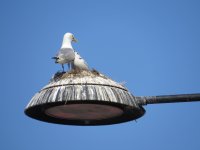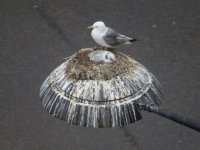I have noticed that different gull species are dominant in different areas, and I was wondering what factors influence this. For example, in my town Lesser Black-back gulls are the most abundant, whilst, in the nearby cities, it is Herring Gulls, and, in my college-town, black-headed gulls are more abundant than other species.
I have asked this question in other forums and groups, but have never received any explanation for these differences in distribution, although many people have also noted the difference in which species is dominant in different locations.
Your help is very much appreciated! Thank you!
I have asked this question in other forums and groups, but have never received any explanation for these differences in distribution, although many people have also noted the difference in which species is dominant in different locations.
Your help is very much appreciated! Thank you!






